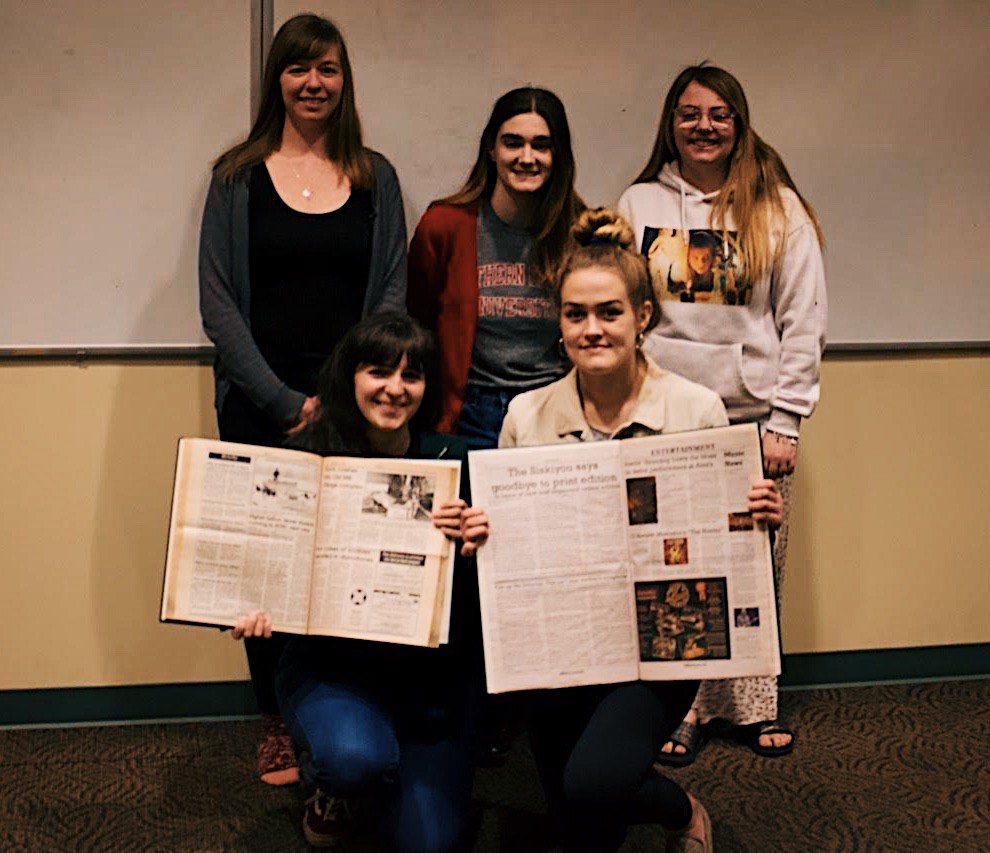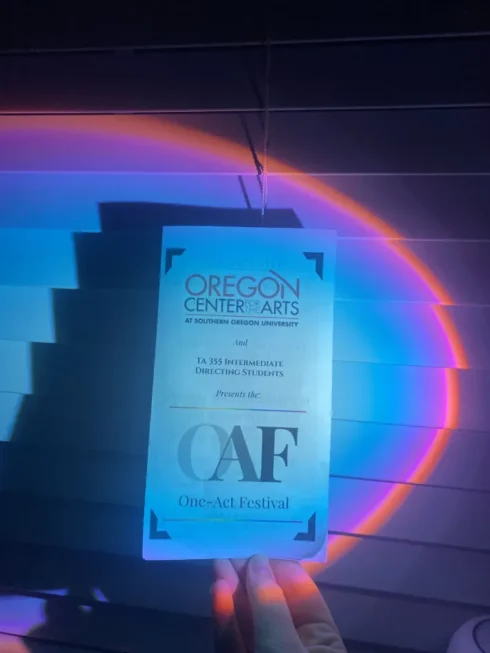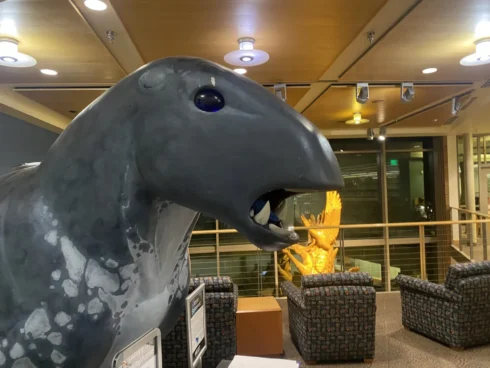Featured Photo by Melissa Matthewson.
The following is The Siskiyou’s appeal letter. Read our Letter From the Editors for more context. This letter was emailed the morning of Feb. 20 to ASSOU Vice President and SFAC Chair Olivia Bozarth and ASSOU Director of Finance and Administration Sarah Grulikowski. We are not releasing the referred statements of support to the public.
To ASSOU Vice President and SFAC Chair Olivia Bozarth,
We sincerely thank you for the immense amount of hard work you put into these budget decisions. We recognize that this is not an easy job, and we appreciate how much time and energy you put into your work.
We appeal The Siskiyou’s budget 2020-2021 allocation. Defunding The Siskiyou would be a mistake not only for our staff writers, but the SOU community and general public. Being the only student run news source on campus, The Siskiyou is invaluable when it comes to sharing information with the student body and the Ashland community. Our staff keep our readers up-to-date with current news and events while gaining journalistic experience in a lower stakes environment.
We recognize that we are a small and understaffed student newspaper. This academic year, a co-editor and social media manager resigned, our traditional faculty advisor went on sabbatical, we lost our newsroom, and have now received a proposed allocation of $0. Despite these setbacks, we have seen an overall increase in site views, disseminating more information to SOU’s campus in comparison to consecutive months in the last academic year. Refer to the bottom of this document for screenshots of our WordPress statistics going back to 2010.
This year, The Siskiyou was the first in the Rogue Valley to break two important stories: Body Lice in the Hannon Library and SOU Crosses Lines with Undocumented Students Resource Page. Without the hard work of The Siskiyou’s paid staff writers, editors, and social media manager, these stories would not have been possible.
The level of journalism that The Siskiyou provides maintains a level of democracy required to effectively run a university. An informed citizen is a responsible citizen. In the microcosm of SOU’s government, labor, education and bureaucracy, paralleled to the nation, it follows that an informed student is a responsible student. Students, and the entire SOU and Rogue Valley Community, have a right to accurate, factual, and timely news. The Siskiyou gives staff writers, and students the opportunity to train as investigative journalists and keeps the student body informed about the university’s operations. We are aware of our delayed publishing times and struggles to cover stories, but we could not even put forth an effort to provide students this right without adequate funding.
While campus news is also circulated through SOUNews and social media, The Siskiyou provides a platform for student voices that is distinguishable from these two sources. “The purpose of SOUNews is to promote the university, its programs, and its people,” Joe Mosley, Director of Community and Media Relations, said. Social media posts can not be relied on to contain verifiable, unbiased content. Both these sources of intercampus communications support student life and engagement. However, The Siskiyou’s mission of generating the highest quality newspaper in an unbiased manner to the students, staff and faculty with newsworthy, entertaining and stimulating content, is different, with unique values to the student community.
We want to reiterate points we made in our previously submitted Form One. “When we were reviewing the Siskiyou, they literally said they’d be fine with a cut,” Sarah Guenther stated in the minutes from the budget meeting. Even in response to the biggest proposed budget cut on Form One in question 2e, “What service would you no longer offer if we cut your requested budget by 25%,” we did not answer that we would be “fine.” We replied:
“A reduction this large would be detrimental to our program’s success. We would have to let go of certain, essential positions including co-editor and Social Media coordinator. These positions allow the paper to reach more people in the community and cover the most pressing stories. We would have to ask writers to not pay themselves– writing “for experience” has been shown to decrease participation in news rooms and make them less diverse as the jobs available cannot support people from different financial backgrounds.”
References here, here, here, and here
We understand and are aware that we have only spent $700 of our current budget. As our budget is a projection for next year’s expenses, this form’s answer is relevant. This academic year, we are short staffed and have faced obstacles mentioned earlier in our letter that we do not expect next year. Co-editor Emiliana Rawley being paid 6.5 hours a week out of work-study funds is another explanation for the small amount of money. We would still function at this 75% level, but it would not be effective in the ways we are mentioning above and below. At a 50% cut, we predict publishing once a month without these effects. At a 100% cut, we would be defunct.
We are also emphasizing the value that The Siskiyou has for our staff. We currently have approximately 9 staff members including the editors and our social media manager who are reliable contributors. That number gets close to 15 if we include writers who are not weekly contributors. Staff writers, the social media manager, and editors gain innumerable marketable skills by writing for The Siskiyou. As co-editors and prior staff writers, we have experienced two of these positions, and have a thorough understanding of the benefits.
First, the benefits of students working as staff writers. Paid staff writers are encouraged to (and usually do) come to meetings prepared with pitches that are relevant to students with, at least, ideas of reliable sources. This challenges staff writers, pushing them into the community and often building connections with events and local news. All staff writers are given a deadline. To remain on staff, writers need to communicate with their editors about this deadline, their sources, and their story. And, of course, writers flesh out their article and interviews, submit the story to their editors, receive feedback, and have a final paid, published, journalism piece. We want to keep this as brief as possible, so we will not go into all the specific skills gained from this process, we assume they are clear.
As staff writers, we experienced these skills develop in ourselves, and have watched professional opportunities open as a result. As editors, we support and teach our staff writers to become better authors as they learn interviewing skills, AP Style and which tones are appropriate for which topics. Being an editor-in-chief of a paper in general, and one that publishes accurate hard news, op-ed, and entertainment pieces requires responding to criticism under public scrutiny. We represent SOU students with the pieces we publish, and are held accountable by students themselves. While the proposed funding allocation of $0 made us consider that, perhaps, we are not doing this job well, the outpouring of support has assured us this is not the truth. Our social media manager learns not only how to work with The Siskiyou’s staff in an effective way, but how to navigate Facebook, Twitter, and Instagram as a journalistic body. This position requires and develops critical thinking and a similar level of public scrutiny that editors face. As editors, we have seen our entire staff and ourselves develop and hone our reporting, written and verbal communication, critical thinking, and leadership skills.
Professors Melissa Matthewson and Christopher Lucas encourage (and sometimes require) their students to participate in The Siskiyou at least twice every quarter in order to experience journalism outside of the classroom. This exposure allows students to acquire new skills and strengthen old ones all while remaining in a safe and supportive environment. Alongside these writers, we also receive weekly submissions from other students representing clubs or school organizations as well as community members who wish to share their work with the student body.
See “A Tribute to Taowhyee Agnes Baker Pilgrim” and “Period Supply Dispensers: Locations, Costs, Stocks, and More”.
Our paper is run by WordPress, and all Siskiyou staff use this platform. Staff writers have contributor accounts where they write, editors have administrator accounts where we edit, and our social media manager has an administrator account where she tracks our stats. Using this platform gives all of our staff marketable experience in WordPress.
As editors, we have seen our entire staff and ourselves develop and hone our written and verbal communication, critical thinking, teamwork, and leadership skills. The skills Siskiyou staff develop are marketable in theoretically all fields. Neither of us can think of a profession that does not require at least one of these skills. As testimony, many individuals submitted Statements of Support. A portion of these are from Siskiyou alum, providing examples of the professional opportunities that The Siskiyou allowed them to pursue. All these Statements of Support are in the document #SavetheSiskiyou Statements.
Again, we thank you for all your hard work. We understand that this has not been an easy decision with the deficit in student funding, and we hope that this letter and accompanying statements will prove to you that The Siskiyou needs to be funded.
If you have any questions about the contents of this letter please contact us.
Sincerely,
Emiliana Rawley, co-editor
Autumn Micketti, co-editor



